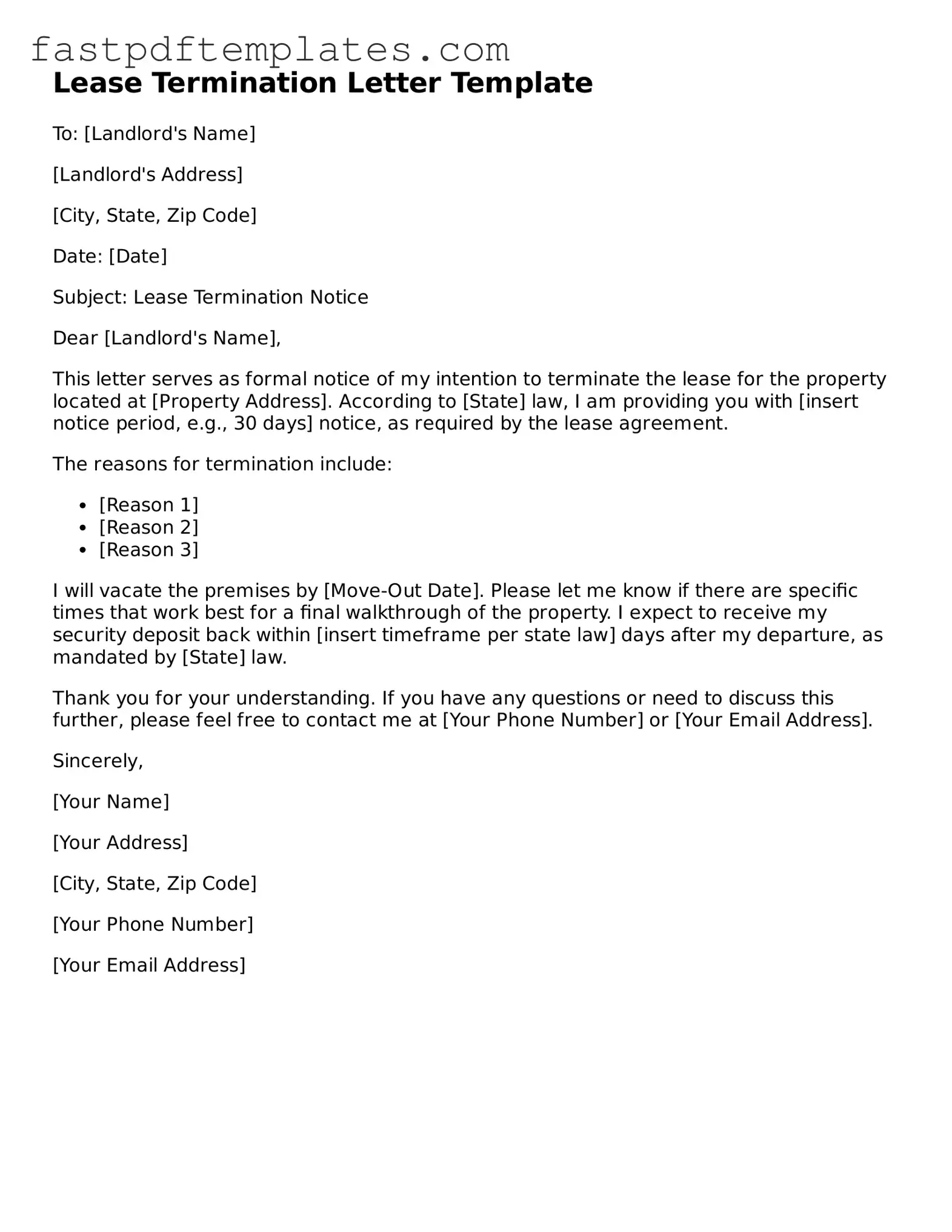A Notice to Vacate is a document that informs a tenant of the landlord's intention to terminate the lease. This notice typically specifies the date by which the tenant must vacate the property. Like a Lease Termination Letter, it serves as a formal communication to ensure both parties are aware of the lease ending. The Notice to Vacate often includes the reasons for termination, similar to how a Lease Termination Letter may outline the basis for ending the lease.
A Rental Agreement Cancellation form is used when either party wishes to cancel an existing rental agreement before its expiration. This document is similar to a Lease Termination Letter as it formally communicates the desire to end the rental relationship. It typically includes details such as the effective date of cancellation and any conditions that must be met prior to termination, much like the stipulations found in a Lease Termination Letter.
A Move-Out Notice serves as a notification from the tenant to the landlord indicating their intent to move out. This document aligns closely with a Lease Termination Letter, as it provides essential details such as the move-out date and the tenant's forwarding address. Both documents aim to clarify the end of the tenancy and ensure a smooth transition for both parties.
A Lease Renewal Notice is issued when a landlord offers a tenant the option to renew their lease. While this document is focused on extending the lease, it shares similarities with a Lease Termination Letter in that it requires clear communication regarding the terms of the lease. Both documents are essential in managing the tenant-landlord relationship and ensuring mutual understanding of the lease status.
An Eviction Notice is a legal document that informs a tenant they must vacate the property, often due to non-payment or lease violations. While more severe than a Lease Termination Letter, both documents communicate the end of the tenancy. An Eviction Notice typically includes a timeframe for vacating and may outline the reasons for termination, similar to the content found in a Lease Termination Letter.
A Rent Increase Notice informs tenants of a change in rental rates. Although its purpose differs from a Lease Termination Letter, both documents require clear communication about changes affecting the tenant's living situation. A Rent Increase Notice may also indicate that the lease will continue under new terms, which can lead to discussions about lease termination if the tenant does not agree to the new rates.
A Lease Assignment Agreement allows a tenant to transfer their lease obligations to another party. This document is similar to a Lease Termination Letter in that it involves the end of the original tenant's responsibilities. It requires clear communication and agreement from all parties involved, ensuring that the new tenant understands the terms of the lease.
A Sublease Agreement permits a tenant to rent out their leased space to another individual. This document functions similarly to a Lease Termination Letter by establishing a new rental relationship while the original lease remains in effect. Both documents require the landlord's consent and clear communication of the terms to avoid any misunderstandings.
A Security Deposit Return Letter is sent by a landlord to inform a tenant of the return of their security deposit after moving out. While it focuses on the financial aspect of lease termination, it shares similarities with a Lease Termination Letter in that it signifies the conclusion of the rental agreement. Both documents must outline any deductions from the deposit, ensuring transparency in the process.
A Final Utility Bill Statement is provided to a tenant at the end of their lease, detailing any outstanding utility payments. This document is similar to a Lease Termination Letter as it marks the conclusion of the tenant's responsibilities. Clear communication regarding final payments is essential to avoid disputes and ensure a smooth transition for both parties.
